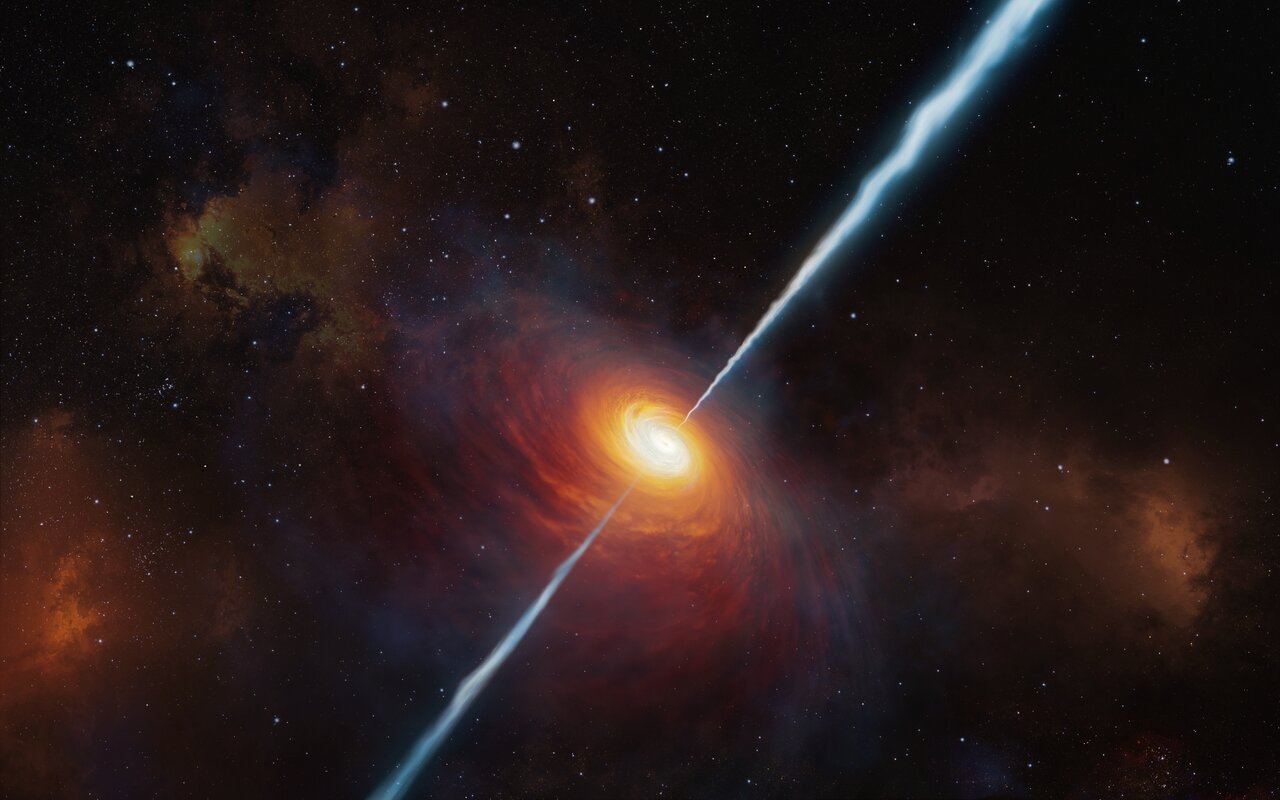
Astronomers have peered back to the dawn of the cosmos to observe time ticking five times more slowly in the early universe than it does now — finally proving a prediction that Albert Einstein made more than a century ago.
Researchers spotted the extreme slow-motion effect in data taken from bright cosmic beacons known as quasars dating to when the universe was just 1 billion years old — less than one-tenth its current age. The researchers published their findings July 3 in the journal Nature Astronomy.
"Looking back to a time when the universe was just over a billion years old, we see time appearing to flow five times slower," lead author Geraint Lewis, a professor of astrophysics at the University of Sydney, said in a statement. "If you were there, in this infant universe, one second would seem like one second — but from our position, more than 12 billion years into the future, that early time appears to drag."
Related: Distortions in space-time could put Einstein's theory of relativity to the ultimate test
The reason time appears to move more slowly in the early universe, at least from the perspective of observers in the present day, was first presented by Einstein in his 1915 theory of general relativity. Because the universe is expanding at an accelerating rate, light emitted from a distant source gets stretched, making its wavelength longer and redder.
Even more crucially, the time delay between light pulses is also stretched to five times the gap it was originally, making time appear to dilate and run more slowly.
"Thanks to Einstein, we know that time and space are intertwined and, since the dawn of time in the singularity of the Big Bang, the universe has been expanding," Lewis said. "This expansion of space means that our observations of the early universe should appear to be much slower than time flows today. In this paper, we have established that back to about a billion years after the Big Bang."
Black holes are born from the collapse of giant stars and grow by gorging on gas, dust, stars and other black holes. For some of these gluttonous space-time ruptures, friction causes the material spiraling into their maws to heat up and emit light that can be detected by telescopes, turning the black holes into so-called active galactic nuclei (AGN).
The most extreme AGN are quasars — supermassive black holes that are billions of times heavier than the sun and shed their gaseous cocoons with light blasts trillions of times more luminous than the brightest stars. Yet their complex light pulses are a tough task to interpret, meaning that until now astronomers have instead focused on the evolution of giant cosmic explosions, supernovas, to study the passage of time in the early universe.
"Where supernovae act like a single flash of light, making them easier to study, quasars are more complex, like an ongoing firework display," Lewis said. "What we have done is unravel this firework display, showing that quasars, too, can be used as standard markers of time for the early universe."
To discover the effect, the astronomers took two decades of data from 190 quasars and analyzed the different wavelengths emitted to standardize their regular flashes, thus transforming them into the tickings of cosmic clocks.
Previously, time dilation had been observed in slow-motion supernovas at up to half the current age of the universe, but rolling back this time window to just one-tenth of this age has confirmed that the effect is present at all cosmic scales — and that it gets more pronounced over greater distances. It also provides a firm rebuttal to previous quasar studies that did not spot the effect.
"These earlier studies led people to question whether quasars are truly cosmological objects, or even if the idea of expanding space is correct," Lewis said. "With this new data and analysis, however, we've been able to find the elusive tick of the quasars, and they behave just as Einstein's relativity predicts."







